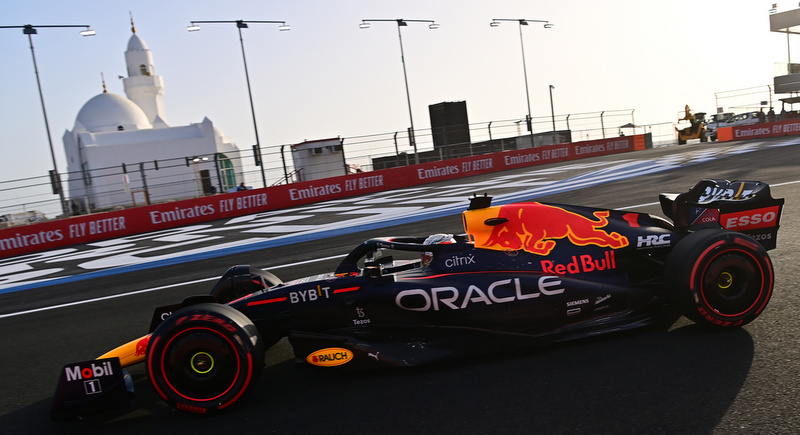Unanimity is rare among F1 drivers, but last Friday night (Mar 25) there was agreement among all 20 of them to boycott the Saudi Arabian Grand Prix.
As the cars took to the track for the first session of the weekend a plume of oily black smoke was rising on the horizon. Its source was an oil depot around 12 kilometres east of the circuit that had just been struck by a rocket.
The Yemeni Houthis claimed responsibility for the attack as the latest salvo in their seven-year war with a Saudi Arabian-led coalition. Saudi Arabia retaliated with airstrikes that reportedly killed at least seven people.
The paddock was understandably jumpy, and the argument that attacks beyond the urban limits were common enough to be unremarkable did little to settle nerves. But over the course of a four-hour meeting that night the wavering drivers were eventually swayed to complete the weekend, noting it wouldn’t have been possible to extract teams and drivers before Monday anyway, so they may as well race with heightened security.
But the drivers managed to extract a concession from F1 to discuss the Saudi Arabian Grand Prix’s future on the calendar.
It’s deeply debatable whether those talks will amount to much.
Saudi Arabia is included in the championship on a 15-year deal rumoured to be the most lucrative in F1’s history. The national oil company, Aramco, is a major F1 sponsor. The kingdom underpins a significant percentage of F1’s bottom line.
The nation has thrown cash around with relative abandon in recent years in what Amnesty International describes as an attempt to ‘sportswash’ its dire human rights record, one of the worst in the world.
Formula 1 bending its morality for calendar expansion in the name of sporting impartiality is nothing new. Similar arguments have long been wielded against it for races in Bahrain, Qatar and Azerbaijan, but the bank always wins, and the window of acceptability is each time widened a little further.
But Saudi Arabia is its most daring inclusion yet. It is comfortably the lowest ranked country on the calendar on any index of human rights or civil liberties, and for seven years it’s been in a war with Houthi rebels that’s turned parts of Yemen into a catastrophic humanitarian disaster.
Jeddah may not quite be a war zone, but the apparent commonality of rocket attacks means it’s not far off.
Aside from making a mockery of F1’s much publicised ‘no war’ message in response to Russia’s invasion of Ukraine, F1’s presence in Saudi Arabia begs the question: how volatile does the security situation have to be before the money no longer outweighs the risk?
When Max Verstappen beat Charles Leclerc to the chequered flag on Sunday night by just half a second to get his first points on the board in his title-defending year, for a precious few hours F1 was able to forget where it was and bask in the evolving title fight between Ferrari and Red Bull Racing.
After being outwitted in his attempts to take the lead in Bahrain, this weekend Verstappen played a much more patient game, waiting until the final 10 laps to test and prod Leclerc’s defences until he finally cracked the Monegasque. But the margins were so fine and the racing so close that even Leclerc admitted afterwards that he’d enjoyed the battle regardless of the outcome.
But as late Sunday night ticked into early Monday morning the sport scrambled for the airport. The diversion of the race had faded and the reality of the situation had been re-established, like an oil cloud hanging thick in the atmosphere.
Formula 1 insists that where questionable human right practices exist, grands prix shine a light on them and hasten progress. If the sport is to return to Saudi Arabia - and it almost certainly will - it must not do so before progress is evident.
The end of the war and the resolution of the humanitarian disaster in Yemen must be the minimum.








